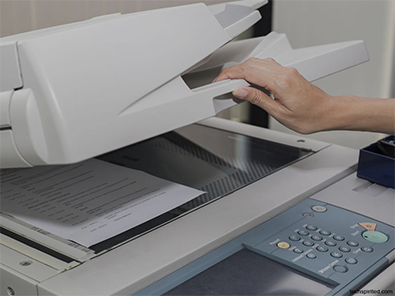The Unintended Consequences of Managed Print Services
Workflow magazine’s Larry Barrett made some interesting points in his recent blog, “The Intended Consequences of Workflow.” He effectively argued for the role workflow plays in widening the crevice between “digital haves and have-nots.” He then crossed over into the realm of societal justice, technological inequality and the need for evenly distributed technological access, postulating that the current separation is intentional.
This got me thinking about the void between intended and actual outcomes of managed print services. There really isn’t any additive outcome directly or singularly related to MpS. We only seem to be trading clicks and gross profit.
Here are a few managed print services derivatives I see:
- Lower margins
- Less copiers
- Many more “consumer-class” multifunction printers sold (versus multifunction copiers)
- No effect on decreasing volumes
Lower margins – “Skyfall”
This is a given. As any service is commoditized/popularized, the last distinguishing element ends up being price. So, yes, everybody sells managed print services now, and margins are dropping as predicted. We shouldn’t be surprised; past ways always seem to trip us up.
Because we’ve been here before and longer than the nouveau-chic reactionaries, shrinking margins don’t cause us to scream, “The sky is falling.” For us, it’s really just same day, different emergency. We’ll do what we’ve always done: find another widget, sell it for as much margin as we can for as long as we can, and then move on to something new.
Some of the old-guard beliefs still hold water: solid sales, excellent service and a pleasant customer experience. Mix these foundational values with new technologies while realigning the status quo, and you’ve got a winning, sustainable business model.
Less copiers – “Oblivion”
Another predictable output is fewer copiers installed – more specifically, fewer A3 devices. I know this is somewhat controversial because nobody admits to selling less. But let’s just face reality: If printing were still on the rise, HP wouldn’t have pink-slipped 25,000 employees, Ricoh would not be selling off direct locations, and margins would still be at 30 percent on hardware. And, yes, I also know there are dealerships out there increasing their sales, maintaining margins and capturing every click in the field. And that’s great. But copier placements are still well below 2007 levels, and we’ll never see those days again. The industry is contracting.
We sold, churned and upgraded willing customers into overpriced, overcapacity devices. For more than a decade, A3 was the standard-size device regardless of throughput speed and, sometimes, requirements. How many 11-by-17 drawers have you opened revealing warped paper and dust bunnies? Some studies have shown 3 percent of all output is in A3 today. Indeed, in my fleet (takeover) of devices monitored for more than three years, 1 percent of output was on A3, while nearly 95 percent of the devices had A3 capabilities. Oversold capacity.
After years of this escalation, what happens with all that underutilized capacity? It gets “optimized” into oblivion.
More multifunction printers – “Cloud Atlas”
In many ways, we’ve made the same decisions again and again – first centralizing the print environment, then decentralizing it, then back to the big machines, and finally out to the desktop again, expanding and contracting on our way to total balance.
With MpS, the intention was to reduce costs by reducing administration overhead, lowering MIF and shrinking volumes because:
- Operational costs were high.
- Acquisition costs on new, larger, overqualified multifunction copiers were too high.
- Installed devices were well over specification for everyday business duties.
Remember when replacing desktop printers was a goal? Do you remember the violent response we experienced when suggesting this approach to an end user? At the time, operational expense outweighed most inconveniences an end user would endure by walking to an “optimized” device. It was much easier to look at the monthly operational costs – indeed, the cost of toner alone – and justify a change in workflow by centralizing printing (again).
Then a strange thing happened. A4 pricing began to tumble as more OEMs started making the little engines. Toner pricing started slipping as well, allowing the combined capital and operational costs to be so low, it became easier to place new printers than face end-user wrath over losing a desktop device.
Today, it doesn’t matter what the machine prints a month. The costs associated with output are so cheap, it’s irrelevant. Print as much as you like! Even the cheapest, easiest alternative will not entice more printing.
“Star Trek” into darkness
So what are some of the unintended results of managed print services?
- More A4 sales: All the OEMs are manufacturing A4 devices as print moves off copiers onto MFPs. We need to capture those rascally clicks and it’s much easier to join them than it is to fight them.
- Lower margins: The economic upheaval and advancement in communications technology have opened up other pathways for communication and interaction beyond print. Beginning to sell toner at lower price points and implementing “MpS” programs designed to mimic the old copier cost-per-copy model is advanced by many players, and this competition drives prices and margins down.
- Operational pricing is now so low, printing becomes thoughtless (or irrelevant).
- On the customer side, reduced demand for print coupled with lower overall cost supports a laissez-faire environment.
“The Vanishing” channel
Some manufacturers are experimenting with automatic toner fulfillment directly, without channel “interference.” These programs are designed to maintain the entire customer experience from the womb to the tomb. Photizo Group forecasts 35 percent of all office printing will be under an MpS contract by 2017 – but in the end, it really doesn’t matter. You see, after decades of installs, there are enough office output devices to fill MpS contracts for years; they just won’t be printing much, and the toner will come in the mail.
Of course, most of this is simply fortune-telling. There’s no way to predict exactly what will happen until it does.
Posted on 10/04/2013


